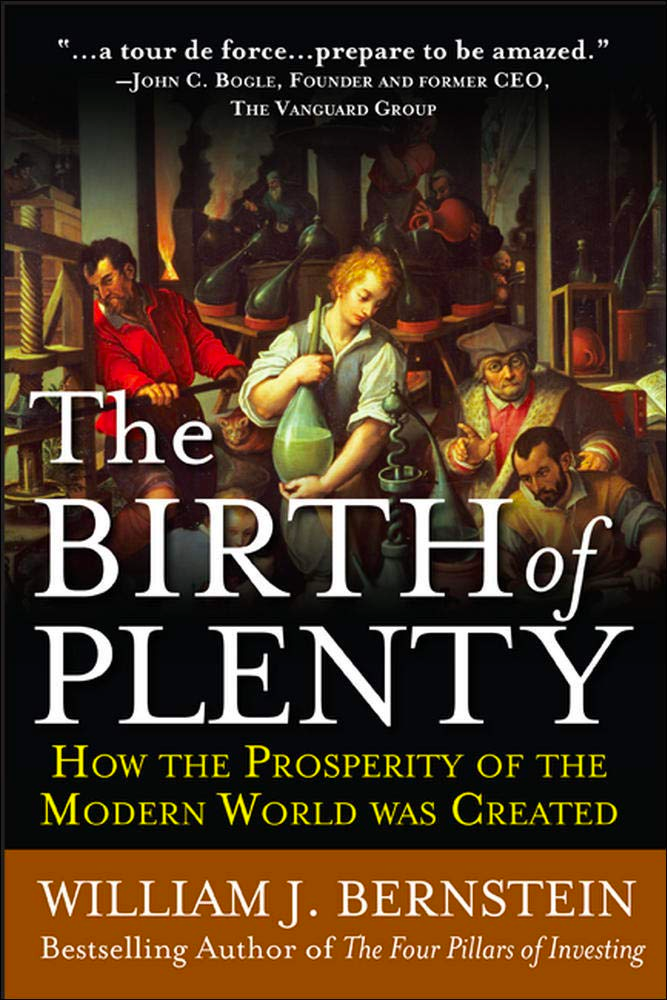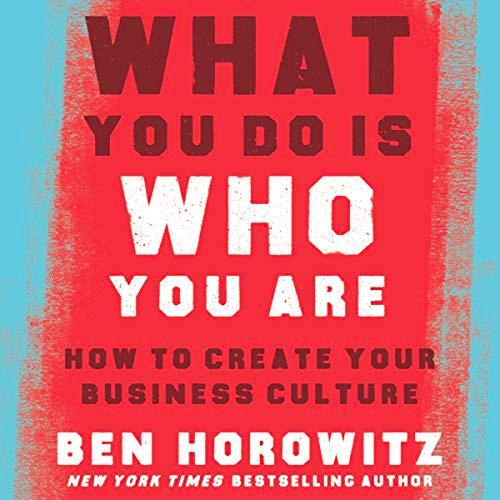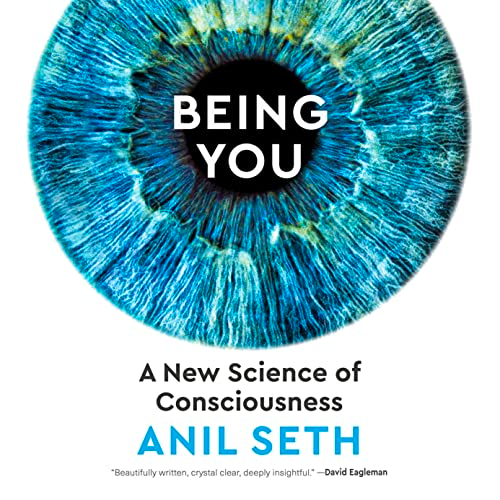
Below I dive into books that I read/listened to this year that changed my perspectives and understandings in a variety of topics. Each entry will be accompanied by a brief summary of the book and notes.
Books (in no particular order):
1. What You Do Is Who You Are: How to Create Your Business Culture by Ben Horowitz

A truly relevant book to me as it addresses the culture that you embed within the company you are building. This book by Ben Horowitz, who is a legend in this industry, enumerates characteristics of different cultures via stories from personal experience or history. There are many learning lessons in this book and it is targeting specifically the building blocks of a sustainable and enduring company culture, one of the cornerstones of a successful business.
Notes:
- Japanese culture has an unscrupulous attention to detail due to the awareness of mortality. This reminded me of Steve Job’s mantra (who self-admittedly was heavily inspired by Bushido) in waking up everyday as if thinking it is your last day. That’s how you produce your best work.
- Your personal virtues are what what the culture will ultimately end up valuing
- Meaningful relationships between team members and team leads is how loyalty is formed. A nice example from Stripe is included in the book.
- Ben’s experience at Opsware: pivoting the whole company required a lot of maneuvering and leadership jiu jitsu that rested on the cultural values he evoked.
- Interesting take on wartime CEOs like Larry Page, Steve Jobs versus peacetime CEOs ala Tim Cook, Dara Khosrowshahi
- “Disagree but commit” in the old days of Netscape resulted in the imperfect (but usable and much needed) Javascript and other tech the Internet is built on today. Nothing built will be perfect and it is more important to start building rather than endlessly debating.
- Very interesting example involving Genghis Khan and his straying away from the status quo due to diversity and inclusiveness that was anathema to the rule of the day. Valued meritocracy versus aristocracy because of his own upbringing and personal experiences.
- Coaching, and not management, was crucial for Fairchild Semiconductor. It can be argued it was the progenitor to the general SV culture today.
2. History Of The Peloponnesian War by Thucydides

I have read this book previously in excerpts during high school (as some of you probably have) but never gave it a thorough examination from start to finish that it deserved. It’s a good thing I did.
The book has been quoted by Winston Churchill and many other preeminent leaders of our times due to its highly influential portrayal of human ideology, desire and spirit. The key lesson here is: Humans and their behaviors have remained unchanged even over 2,400 years later.
Notes:
- Pericles’ Funeral Oration was beautiful. I was quite surprised by how Pericles could simulate other peoples behaviors and interpretations of statements he was making so as to prevent any consequential actions.
- Pericles headed the radical democracy that powered Athens in the early years of the Peloponnesian War. Unfortunately, when he passed and without his leadership, everything started to deteriorate. Was that a true democracy then if it rested on the shoulders of one individual?
- Impossibilities that are probable are more useful than possibilities that are improbable - Aristotle (from Poetics)
- Sometimes death is not the ultimate deterrent because poverty drives necessity of action
- Desire and hope, one leads and one wants.
- The descriptions of plague and massacres are horrific and are almost parallel to recent events in human history. One particular example of the massacre of a school at Mykalessos by barbaric Thracian mercenaries show cased how humanity can evaporate in an instant.
- Intense rivalry between Cleon and Nicias. One a war mongerer and the other a self-interested peace keeper (Nicias owned vast tracts of land).
- Conclusion: The true enemy of Athens was Athens itself.
3. Being You by Anil Seth

Consciousness has always been a topic that intrigued me. Especially after years of developing artificial intelligence systems, I have always wondered what kind of a task it would be to emulate or even create consciousness with AI.
This book unpacks a lot of material from the neuroscience world introducing readers to concepts that may or may not have been evident before.
Notes:
- A very interesting use of the Lempel-Ziv-Welch (LZW) lossless data compression algorithm to calculate the randomness and entropy rate of electrophysiological brain data. Using LZW, an algorithm that is used for example in .gif files, is such an intriguing concept. It makes sense that the higher the randomness of data, the harder it will be to compress and the less random the data, the higher the compression rate. This results in a measure of algorithmic complexity of our brains (wow!). Super interesting stuff and the utility of an algorithm that is from a completely different domain with completely different target use cases was mind-blowing.
- Order = integration, disorder = information in the sense of neuroscience.
- Integrated information theory basically posits that the system or the whole (integration) is greater than the sum of its parts.
- Panpsychism theory brings forth the idea that even atoms experience consciousness.
- Being alive != conscious
- Is consciousness stemmed from information from our senses combined with memories, reflexes and learnings resulting in the final integration in the form of consciousness?
- Interesting take on Bayesian inference and the feedback loop of: a priori -> likelihoods -> a posteriori. Reliability of information is critical here.
- Humans are incredibly bad at measuring or judging time.
- Teletrasportation paradox brings incredible ethical and legal questions that require a deep understanding of consciousness.
- Free energy principle posits that all life is “programmed” to reduce free energy and thus reduce entropy to get to an equilibrium state. It states that the brain is essentially an inference engine that tries to determine the states to do reduce free energy.
- Interesting use of allostasis in the sense of change of the body.
- Technology is already working majorly on our consciousness.
- Cerebral organoids look to be super interesting.
4. The Order of Time by Carlo Rovelli

Written by the physicist Carlo Rovelli, this is a really fascinating take on explaining one of the hardest aspects of our reality.
The use of Horace verses at the start of every chapter is interesting, almost poignant, as there are interspersed hints that even our ancient forefathers were thinking deeply on the questions of time and mortality.
Notes:
- Our language is inadequate in explaining hard concepts including time.
- Time describes events, change and relations.
- Interesting interpretation of time by Aristotle where a perspective of relativity is evident and the measure of change.
- Time evolves from a world without time
- The universe stats in a state of low entropy and change increases entropy, therefore in its inextricably linked with time.
- 2nd law of thermodynamics is used to explain that entropy can never go below 0 and in a way imitates time as it goes in one direction.
- Is entropy relative?
- We get low entropy in form of photons from the Sun, close to the pure form of low entropy from the beginnings of the universe.
- The movement of particles results in heat and is ultimately the change we experience that then becomes an event
- Our brains adapted to the concept of time using terms like past, present and future for survival but these terms do not make sense in the universe itself.
- Music can synchronize humans
- The concept of durations is an artifact of the human brain even though there is no such thing as the present
5. The Birth of Plenty: How the Prosperity of the Modern World Was Created by William J. Bernstein

This book explains how we go to where we are today where entrepreneurs are able to create, innovate and generate value for modern societies. The book provides a great socioeconomic thesis of the times we live in and the developments from history that allowed us to get to this point by identifying 4 critical pillars: Property/Intellectual Rights, Scientific Method and Rationale, Free Flowing Capital Markets and Transportation/Communication.
If a society lacks even one of these pillars or conditions, it will end up being less prosperous and inefficient with regards to economic growth.
Notes:
- Athens (and the communities surrounding it) evolved to become democracies due the society’s agrarian nature and roots. There needed to be a way in splitting up lots for farming and agriculture and as such democracy was formed to power such decisions by vote.
- Along with democracy, Athens also had a concept of property rights intertwined within their governance. However, they lacked the 3 other pillars and therefore the polity was not effective and efficient.
- Macedon and Sparta were anti-democratic and oligarchic in nature due to their environments situated in valleys or coasts, resulting in slavery and no property rights except for the people in power.
- The Dark Ages resulted in a completely collapse of all developments achieved by the ancients however was slowly rediscovered.
- Magna Carta was the pivotal event for English common law in diluting the monarchy’s powers and spreading it to the barons and clergy
- The freeing up of the resources and major religious movements such as the English Reformation lead to the Scientific Method championed by Francis Bacon and Isaac Newton.
- With the Scientific Method, society moved away from Aristotelian Natural Philosophy, empirical testing now allowed for rapid advancement in science
- Low interest rates allowed for capital to flow to inventors and to fund their experiments powered by the Scientific Method
- Before free flowing capital markets, property rights and the scientific method, people had no incentive to pursue innovation due to the feudal system that basically provided no reward or protection for inventors.
- Free capital flow of markets were achieved in the Netherlands and then imitated by Great Britain achieving the lowest interest rates in Europe. It isn’t a coincidence that both of these empires relied heavily on intercontinental maritime trade that reduced dependence on agriculture.
- High interest rates in other countries was due to the the seasonal aspects of harvests resulting in interest rates around or more than 30% (!) as loans were tied to crop outputs. Innovation cannot happen at these high level of interest rates.
- Investment banking and limited liability partnerships reduced liabilities for Dutch and British trade and was initiated by the need to mitigate and distribute risk among many investors versus only a couple, which could alleviate the disastrous effects for investors, in a time when vessels and ships would sink often.
- Transportation and communication effectiveness progressed rapidly after the Industrial revolution with the advent of the steam engine, telegraphs, cars. With an effective transportation and communication system, inventors can distribute their products effectively to customers.
Final notes: If you are looking for a good read, you can’t go wrong with any of the books on this list. The pursuit of knowledge is what makes us truly exceptional.
Subscribe to my blog
Get new posts delivered directly to your inbox.
Enjoy this post?
Subscribe to get new content in your inbox.

